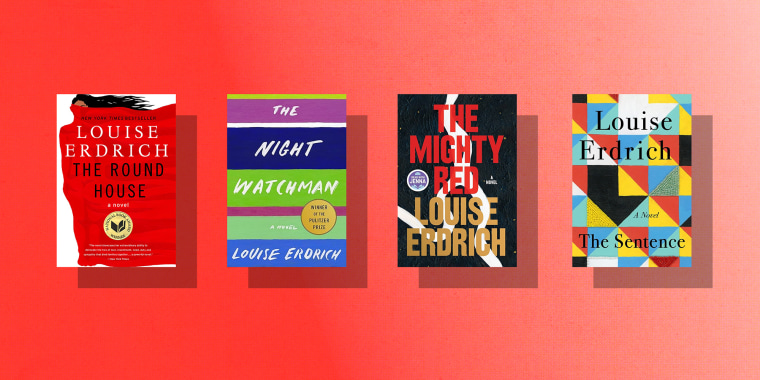Literary legend Louise Erdrich joined Jenna Bush Hager’s book club last month when her latest novel, “The Mighty Red,” was chosen as a pick.
Warm and wise, “The Mighty Red” is a polyphonic novel following members of a close-knit North Dakota community in the mid-2000s, many of whom are Indigenous.
Kismet, the 18-year-old daughter of Crystal, a single mother, finds herself in a love triangle. She’s between Gary, the heir to a beet farm empire who just proposed, and Hugo, her best friend who happens to be in love with her.
Erdrich told TODAY.com the novel was inspired by her first job working at a beet farm when she was 13.
“I was part of an all-girl crew, up before dawn. The hard work has given me a lasting sympathy for field labor and for people who work in the sugar industry,” Erdrich said.
A member of the Turtle Mountain Band of Chippewa, Erdrich’s award-winning, best-selling novels center around Native American communities. Her novel “The Night Watchman,” which won the Pulitzer Prize in 2021, was inspired by her grandfather, Patrick Gourneau.
Erdrich is also the owner of an indie bookstore, Birchbark Books in Minneapolis, Minnesota. (Her 2021 novel “The Sentence” is set at an independent bookstore in Minneapolis).
Below, Erdrich answered 10 questions about “The Mighty Red” and her writing career — including whether she plans to write more novels in her “Love Medicine” series and the characters she still misses.

Of your many books, is there a book, a character or storyline that has stayed with you the most, or that you’re proudest of?
There are parts of each of my books that I like and parts I’d love to change. I’m going to answer this as characters I miss writing the most. Those would be 13-year-old Joe in “The Round House” and Tookie in “The Sentence.” Somehow, who they turned out to be the ones that resonated most for me. Sometimes a character reveals a side of yourself you didn’t know about.
Where do you get your inspiration — and when do you know you’ve landed on an idea for a novel?
When I say that I start hearing voices, it sounds unreal, but that’s essentially what happens. Lines and phrases take shape, I write them on scraps of paper and tape them in a notebook. Eventually one of those scraps leads to a little more, then a lot more, then a whole world.
What is your favorite part of owning a bookstore?
Independent local bookstores, like Birchbark Books, bring a lot of comfort to people. Readers have a questing intelligence I really love. That curious bent of mind is something I really value, and the love of books is infectious. I love our customers — selling books is much more than a simple transaction. There are so many favorite things!
You compared writing a character to dealing with a “complicated phone bot.” How do you know when the character has come alive?
Yes, writing a character really is like working your way through a complicated phone bot until you get a real person on the other end of the line. Sometimes you have to trick your way through the system many times. Getting a character is like hearing a real voice on the other end of the line, someone who will respond even when you say something irrational, or laugh at a joke.
What does your ideal writing day look like?
I’ve yet to have one — I write at any time and just try to fit writing into a host of other requirements. I suppose an ideal day is when I write something that hits me emotionally.
Are you currently working on another book?
I always start a new book before I finish a book. That way I have something to look forward to.
Which book of yours was the hardest to write?
“The Mighty Red” was extremely difficult — I have a whole other book made of back stories that I had to cut.
Can we look forward to more ‘Love Medicine’ books?
Not out of the question!
Do you prefer to write with a computer, old fashioned pen and paper or a combination of both?
I write everything out by hand at first, then I edit those pages and at last type the pages into a computer. Then I print the pages out and go back to editing by hand. I don’t edit on a computer because I might lose the old version and I like seeing handwriting again.
What was the biggest hurdle that you had to clear to become a published author?
Learning how to write a plot. I wrote for women’s magazines like Redbook and Ladies Home Journal when they printed stories and paid well. I thought I was a poet and was doing this to help support my poetry, but in fact, I liked writing stories and kept doing so in more innovative ways, incorporating my love of engaging language and complicated histories. Eventually I wrote “Love Medicine.”